A freshwater planted aquarium is a unique and natural aquatic ecosystem you can create for your home. Planted or natural aquariums contain specially selected aquatic plants and fish to closely replicate beautiful underwater environments found in nature. Gardeners, teachers, and experienced aquarists alike are discovering the many benefits of these beautiful aquariums.
|
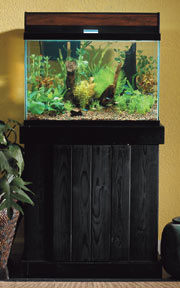
Because of the complementary relationship between fish and plants, an established natural aquarium is usually easier to maintain than other aquarium setups. Fish provide carbon dioxide and nutrients for healthy plant growth. In turn, aquatic plants provide supplementary biological filtration and oxygen to create a clean, healthy environment for fish.
Whether you're new to planted aquariums or an experienced hobbyist, you're sure to enjoy the graceful beauty of this unique aquarium. Follow along as we take a 20 gallon high (20H) aquarium and turn it into a beautiful natural aquarium - complete with easy-to-grow aquatic plants and peaceful community fish.
Start with a 20-gallon high aquarium, Aquarium Stand, and Fluorescent Strip light.
 |
| Step 1: Set-up & Start with a Quality Plant Substrate |
 | Set up aquarium and stand. |
 | Add a high quality, mineral-rich substrate (this is the foundation for long-term success). |
 | Rinse plant substrate well before placing in aquarium. |
 | Fill aquarium with dechlorinated water and install filter and heater. |
| |
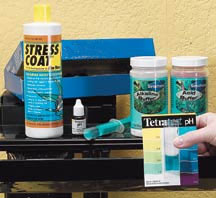 |
| Step 2: Test and Regulate pH and Hardness (KH) |
 | Depending on your source water, use a water conditioner to adjust the pH to between 6.5 & 7.5 (Seachem Acid Buffer or Neutral Regulator). This pH range is appropriate for both fish and plants. Remember to monitor the pH often once the aquarium has been set up. |
 | In areas that experience very hard water, useReverse Osmosis water and remineralize withSeachem Equilibrium. |
|
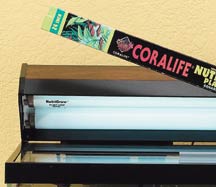 |
| Step 3: Add Lighting |
 | The standard fluorescent lamp included with an aquarium hood or strip light is not ideal for healthy plant growth. |
 | Replace the supplied fluorescent lamp with a plant lamp (use two strip lights if you are keeping plants with higher light requirements). |
| |
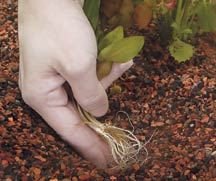 |
| Step 4: Add Aquatic Plants |
 | Allow aquarium to establish for at least 2 to 3 weeks before adding fish. |
 | Use short plants in the foreground and add plants in ascending order to fill the midground and background. |
|
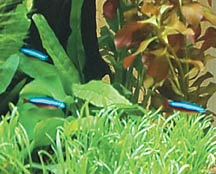 |
| Step 5: Add Fish |
 | Allow aquarium to establish for at least 2 to 3 weeks before adding fish. |
 | A school of 6 to 12 small fish is perfect for natural aquariums. Remember, the plants are the "stars" of a natural aquarium. |
 | Refer to our list of recommended fish, but most community fish will do fine in a planted aquarium. |
| |
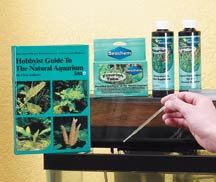 |
| Step 6: Add Supplementary Plant Nutrients as Needed |
 | As aquatic plants begin to develop, they will require supplementary nutrients (fertilization) to sustain growth. |
 | Carbon is an especially important plant nutrient rapidly used by growing plants. Carefully follow manufacturer's recommendations to maintain healthy plant growth.
Source : http://www.liveaquaria.com/ |
|
 Because of the complementary relationship between fish and plants, an established natural aquarium is usually easier to maintain than other aquarium setups. Fish provide carbon dioxide and nutrients for healthy plant growth. In turn, aquatic plants provide supplementary biological filtration and oxygen to create a clean, healthy environment for fish.
Because of the complementary relationship between fish and plants, an established natural aquarium is usually easier to maintain than other aquarium setups. Fish provide carbon dioxide and nutrients for healthy plant growth. In turn, aquatic plants provide supplementary biological filtration and oxygen to create a clean, healthy environment for fish.



















0 comments :
Post a Comment